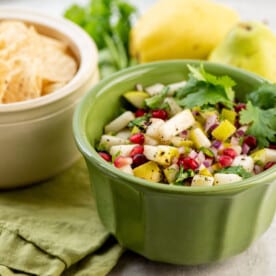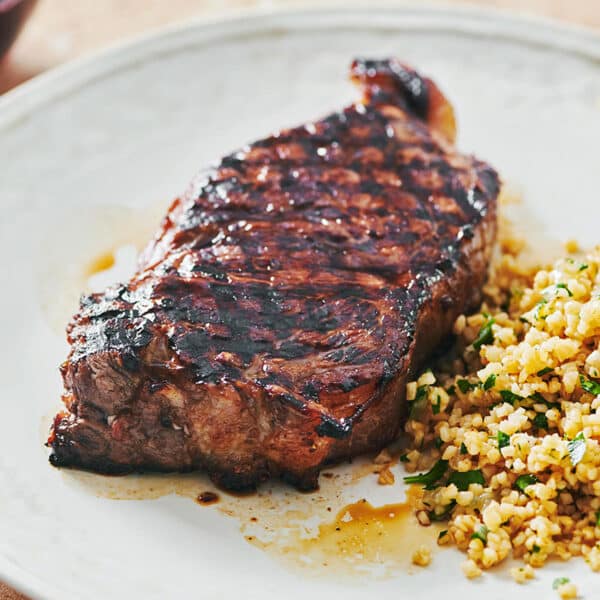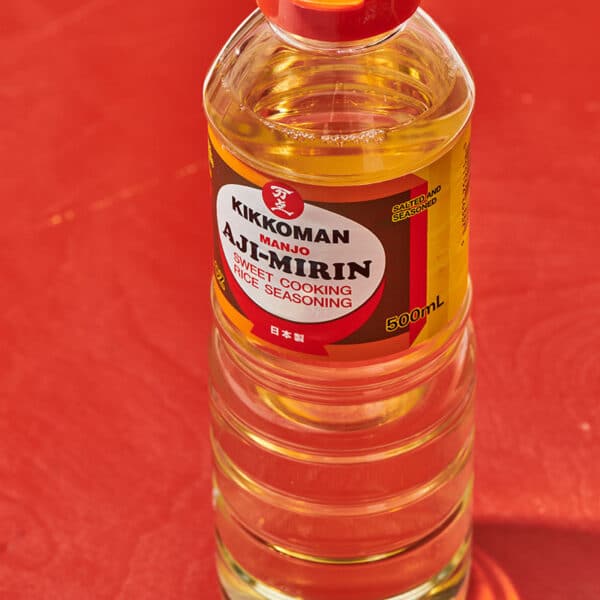How to Cook with Pomegranates
on Dec 23, 2020, Updated Nov 27, 2024
This post may contain affiliate links. Please read our disclosure policy.
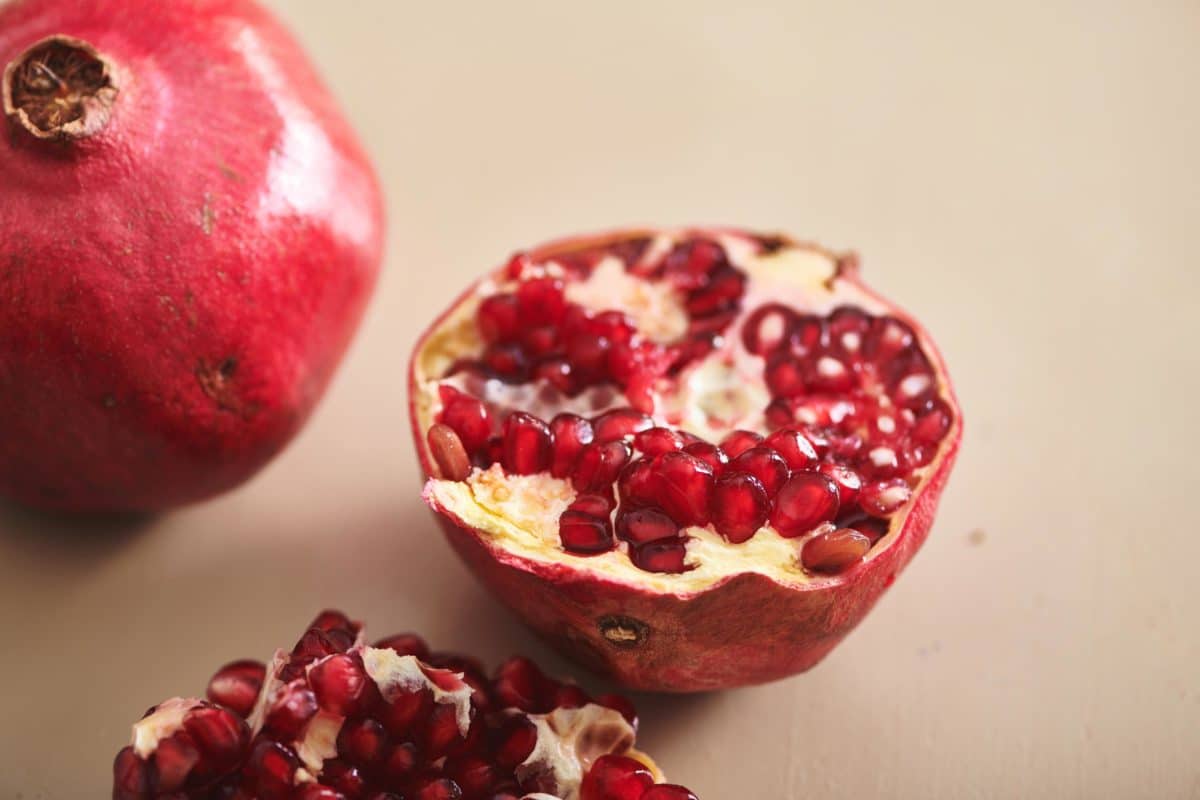
There is no mistaking a pomegranate; from the look to the taste, pomegranates are a one-of-a-kind fruit. Pomegranates are used in savory and sweet dishes and are very popular in Israeli, Middle Eastern, Mediterranean, Indian, and African cooking. Pomegranate juice is also extremely popular, both used in cooking and also available bottled for straight-up drinking and use in cocktails and mocktails.
Pomegranates are so delicious, so versatile, and so festive. In the Jewish tradition, they are a symbol of righteousness, knowledge, and wisdom. Since they are available in the fall and winter months, they are a wonderful way to add a bright pop of flavor and color to so many cold-weather dishes. Buying the whole fresh fruit and removing the seeds yourself will get you the fresh seeds, or arils. You can also buy them in the prepared produce sections of many grocery stores. They are more expensive and won’t last very long, but they will also save you the time and energy of removing them from the shell, so that’s the trade-off!
By signing up, you agree to our Privacy Policy.
Pomegranate seeds can be used in various ways in both sweet and savory dishes. Add them into salads, rice and grains dishes, or stir them into yogurt; sprinkle them on baked eggplant and other roasted vegetable dishes; or incorporate them in tarts, cakes, scones, and chocolate desserts. Let pomegranates become the star of your next salad or cocktail; start by trying a Pomegranate Orange Mocktail with Mint and Arugula, Orange, and Pomegranate Salad.
What's In This Post?
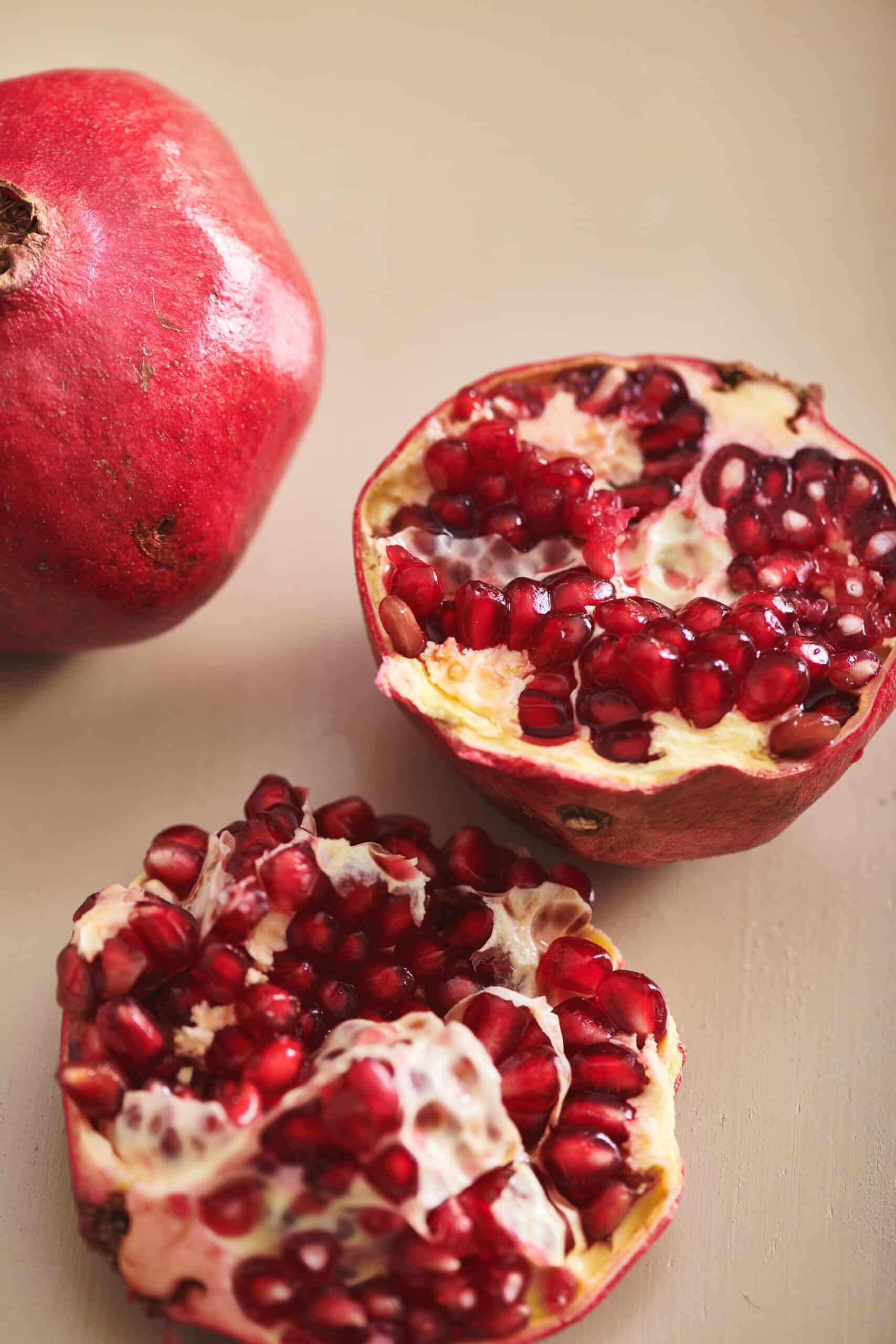
Pomegranates are a one of a kind fruit. Here’s everything you need to know about how to buy, store, prepare, and cook with pomegranates. Plus 8 pomegranate recipes you should try!
What Is a Pomegranate?
Pomegranates made their way to America around 1770. After 250 years in this country, you would think these wonderful fruits would be well-established, but they are still kind of unknown and even mysterious to many. (And then there are the die-hard fans like my sister who buys bags of pomegranates when they are in season and consumes one each day.)
Pomegranates have a few things that perhaps stand in their way of world domination: their limited season, their cost, and the effort they require. In order to access their bold and tasty seeds, you need to do a little work cutting through the leathery exterior and extracting the many hundreds of seeds, all without letting any of the juice stain your clothes, countertop, or dish towels.
Cultivated throughout the dry regions of the Mediterranean and Middle East, pomegranates grow on a spiny bush with beautiful bright red flowers. In many cultures, this fruit symbolizes life, vitality, and fertility, and, in Judaism, they are an important part of the Rosh Hashanah (Jewish New Year) celebration.
What Do Pomegranates Look Like?
Pomegranates are round, bright, reddish-brown fruits roughly the size of a large naval orange with thick, leathery, smooth skin. Inside the fruit are hundreds of little tiny pods called arils, which are the size of small corn kernels and filled with bright red juice and a crunchy little seed inside.
FAQs
Pomegranate seeds and juice are both sweet and tart in flavor, especially when they are at their peak. Like citrus fruit, pomegranates are very refreshing and add a bit of zing to a lot of dishes.
Pomegranates are in season from late fall through early spring (September-February). Similarly to citrus, the weather greatly influences the harvest of these somewhat temperamental fruits, so the drier and warmer the weather, the better the yield.
Pomegranates are one of those foods that have received lots of attention in the past decade, being touted as a “superfood” and packed with positive nutrients. Pomegranates are among the top fruits high in antioxidants which are essential for fighting cancer, heart disease, and overall good health. They are also high in fiber, vitamin C, and vitamin K.

Where To Find Pomegranates?
Often, pomegranates can be found in your usual supermarket when in season (typically late September through February). But sometimes, you may need to look harder to seek them out during their peak season in specialty markets.
If you are lucky enough to live near where these are grown in the United States (mainly California), they can be readily found in supermarkets and farmers markets. Some supermarkets or specialty markets sell containers of the seeds, and pomegranate juice (such as POM) is usually available in various kinds of markets and convenience stores.
How To Pick The Best Pomegranates
All pomegranates should be firm, and the skin should be glossy. Look for a deep red color, though know that some varieties are paler in color. Firm and heavy indicates arils/seeds filled with lots of juice. Look for fruit with angular sides vs. a spherical shape. Make sure the skin is thick and smooth, free of brown spots and bruises.
Kitchen Smarts
Never cut open a fresh pomegranate? Get essential tips for removing pomegranate seeds.
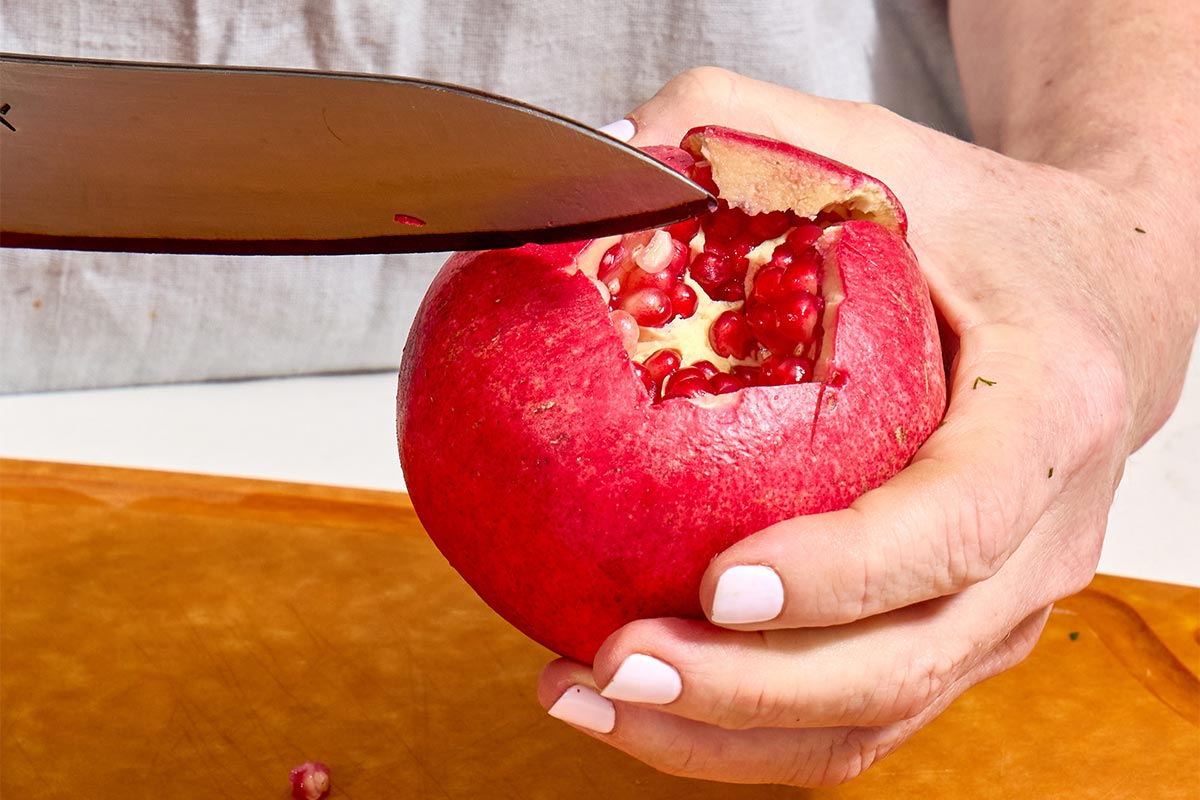
If you are buying the seeds already removed from the fruit, make sure the little arils are bright red and firm, not shriveled, soft, or brownish in color.
How to Juice Pomegranate
If you want to extract the juice, take a cup or so of fresh, plump seeds and place them in a blender or food processor. Pulse a few times. You want to do this just enough to break the outer skin of the little arils but not to pulverize them.
Be careful not to over-blend, as you will incorporate the bitter parts of the seeds into the juice. Then, turn them into a fine colander over a bowl. Using a rubber spatula, press the seeds to allow the juices to flow out.
I rarely make my own pomegranate juice, though. You can more easily and neatly buy 100% pure pomegranate juice, like POM, in many markets. And it takes a lot of seeds to make a cup of juice, so it’s not all that economical. Pomegranate juice can be used in cocktails, smoothies, granitas, syrups, dressings, marinades, tarts, and dessert glazes.

How To Store Pomegranates
Pomegranates are picked ripe and, therefore, do not continue to ripen off the tree. Whole, fresh pomegranates will keep in the fridge for up to 2 weeks or on the counter for up to 1 week.
Pomegranate seeds will keep in an airtight container in the fridge for up to 5 days. Keep an eye out for the seeds that turn brownish or get slimy; these are indicators they have gone bad. You can also freeze pomegranate seeds for up to 3 months. Fresh juice should be consumed within a week.

